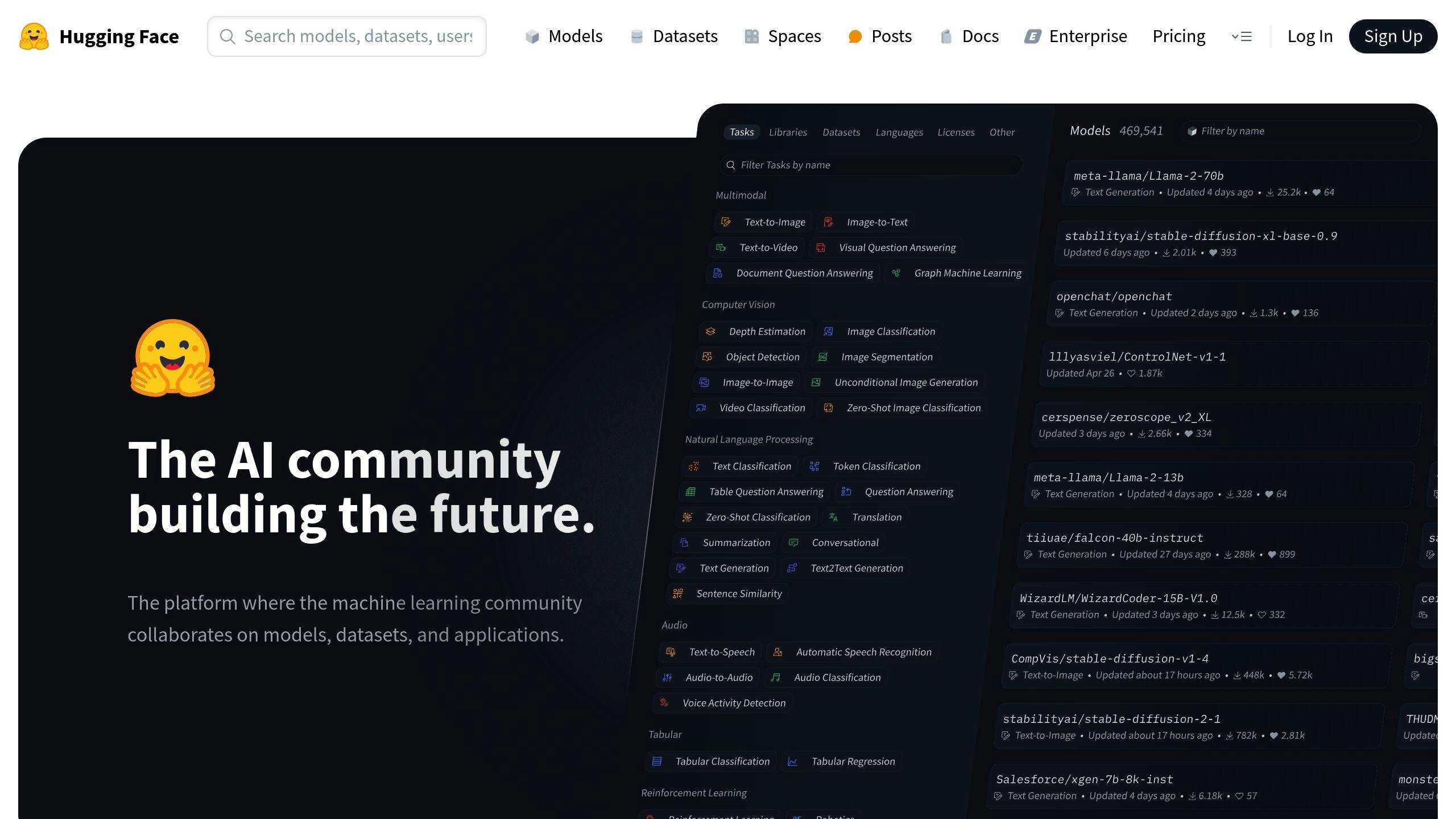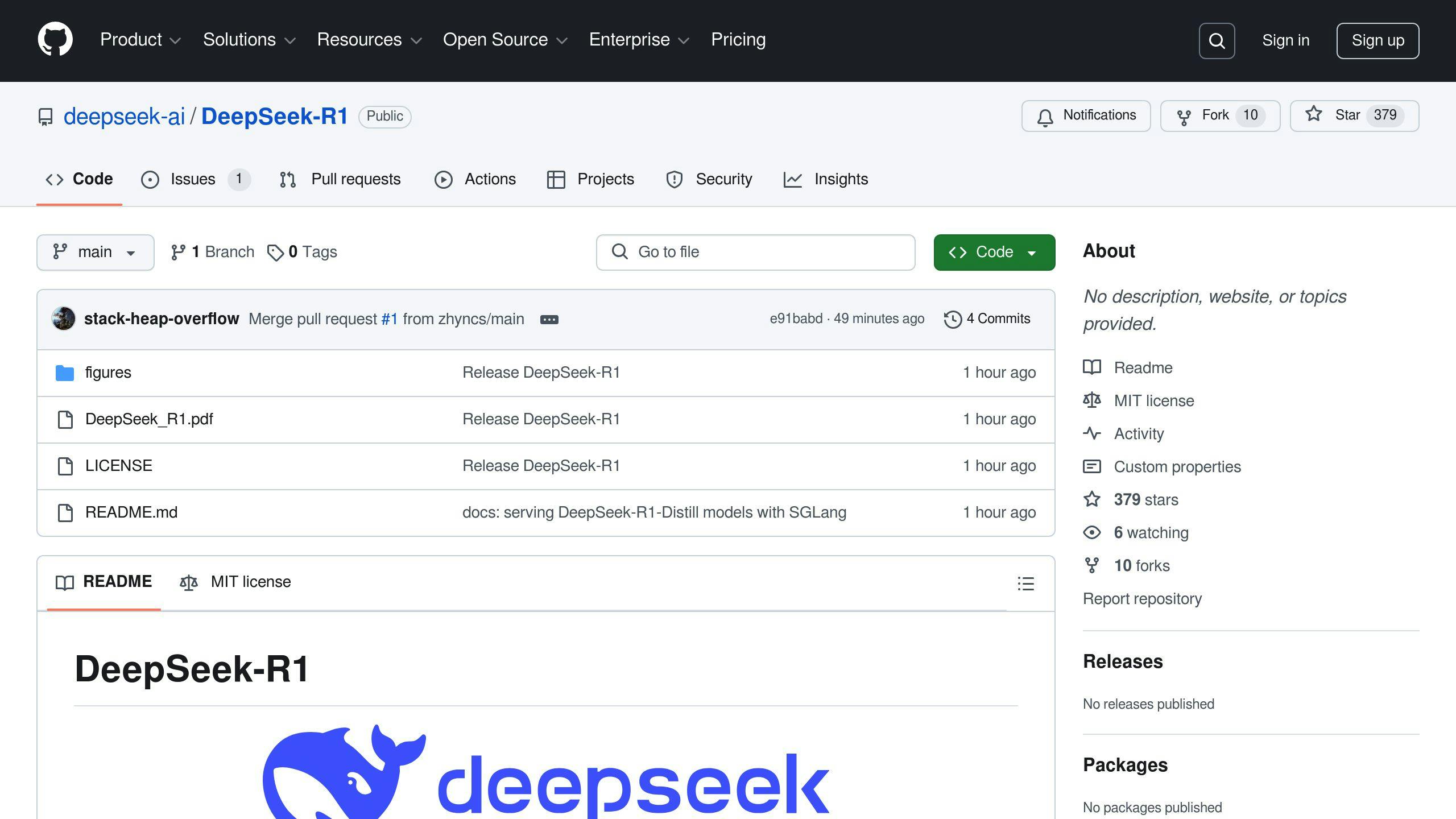DeepSeek R1, known for its 1357 Arena score and low cost of $0.55 per million tokens, has inspired replication projects aimed at making advanced AI more accessible. HuggingFace‘s Open R1 leads this effort by creating an open-source version of DeepSeek R1, focusing on transparency and affordability.
Key points covered:
- Open R1 Project: Full-scale replication of DeepSeek R1 with tools like training scripts, evaluation utilities, and synthetic data generation using R1-Zero.
- SimpleRL-Reason by HKUST: A streamlined approach focusing on reasoning capabilities with lower resource needs.
- Challenges: High computation demands (e.g., 1,342 GB VRAM and 2.664M GPU hours) and replicating DeepSeek R1’s Mixture-of-Experts model with 37 billion active parameters.
- Impact: Open replication fosters collaboration, reduces costs, and broadens access to high-performance AI while raising ethical considerations.
Quick Comparison of Open R1 vs SimpleRL-Reason
| Feature | Open R1 (HuggingFace) | SimpleRL-Reason (HKUST) |
|---|---|---|
| Approach | Full model replication | Simplified reasoning focus |
| Data Strategy | Synthetic R1-Zero data | Reasoning datasets |
| Resources | Higher computational needs | Optimized for efficiency |
| Scope | Full capabilities | Core reasoning tasks |
These efforts highlight the potential of open AI replication to rival proprietary systems while addressing technical and ethical challenges.
Overview of HuggingFace‘s Open R1 Project

Goals and Approach of Open R1
HuggingFace’s Open R1 project aims to make advanced AI tools more accessible by creating an open-source replica of DeepSeek R1. The team focuses on transparency and reproducibility, working collaboratively to replicate DeepSeek R1’s capabilities. The goal is to extend cutting-edge AI technology beyond the reach of large, well-funded corporations. Their method involves extracting high-quality training data from the original DeepSeek R1 models while building entirely open-source alternatives.
Features of the Open R1 Repository
The Open R1 repository offers a range of tools to support this initiative:
| Component | Function | Key Features |
|---|---|---|
| Documentation | Implementation Guide | Technical specs and setup instructions |
| Training Scripts | Model Development | Tools for data preparation and training workflows |
| Evaluation Tools | Performance Testing | Benchmarking utilities to measure against DeepSeek R1 |
| Data Processing | Dataset Management | Scripts for working with public and synthetic datasets |
The repository incorporates the R1-Zero model to generate synthetic training data. This reduces reliance on proprietary datasets while maintaining high training standards.
Progress and Challenges of Open R1
While the Open R1 team has made notable progress in replicating DeepSeek R1’s core features, they continue to face technical challenges:
- Resource Optimization: Developing efficient training methods and managing the computational demands of large-scale reinforcement learning.
- Data Quality: Ensuring synthetic and public datasets are as effective for training as proprietary ones.
These obstacles are similar to the resource concerns raised by Meta [2]. Despite these challenges, Open R1’s progress highlights the potential to replicate DeepSeek’s capabilities in a resource-efficient manner.
Other DeepSeek R1 Replication Efforts

SimpleRL-Reason Study by HKUST

The SimpleRL-Reason study from HKUST offers a streamlined take on replicating DeepSeek R1’s reasoning abilities. Instead of aiming for a full reproduction, this study simplifies the reinforcement learning (RL) architecture to focus on efficiency while retaining essential reasoning functions. Details of this approach are outlined in their technical report.
| Aspect | SimpleRL-Reason Approach | Benefits |
|---|---|---|
| Learning Process | Simplified RL implementation | Lower computational demands |
| Focus Area | Core reasoning capabilities | Easier to replicate |
| Resource Requirements | Optimized for efficiency | More accessible to researchers |
| Implementation | Streamlined architecture | Quicker to deploy |
Comparison of Replication Strategies
Different teams have adopted diverse methods to replicate DeepSeek R1, each with its own focus. Open R1, for instance, aims for a full-scale replication, while HKUST’s SimpleRL-Reason narrows its scope to reasoning tasks. These contrasting strategies highlight the flexibility in achieving similar goals.
| Feature | Open R1 (HuggingFace) | SimpleRL-Reason (HKUST) |
|---|---|---|
| Approach | Full model replication | Simplified RL-focused method |
| Data Strategy | Uses R1-Zero for synthetic data | Focuses on reasoning datasets |
| Resources | Higher computational needs | Optimized for efficiency |
| Scope | Full model capabilities | Specific reasoning features |
Both approaches contribute to the broader goal of making high-performance AI more accessible. These efforts showcase how varied strategies can work together to build a more inclusive AI ecosystem.
Hugging Face Journal Club – DeepSeek R1
sbb-itb-5392f3d
Technical Challenges in Replicating DeepSeek R1
Replicating advanced AI models like DeepSeek R1 comes with several hurdles, from hardware demands to algorithmic complexities.
Data and Compute Requirements
DeepSeek R1’s replication demands massive resources: approximately 1,342 GB of VRAM and 2.664M H800 GPU hours to process 14.8T tokens. This level of computation requires enterprise-grade GPU clusters, typically featuring setups like NVIDIA A100 80GB x16 or comparable hardware [1]. The cost and infrastructure involved make this a significant barrier for many teams.
Algorithmic Challenges
DeepSeek R1 uses a Mixture-of-Experts (MoE) model that activates 37 billion parameters per token out of a total of 671 billion. This requires precise execution of advanced techniques like GRPO, rejection sampling, and multi-stage training [1][3]. Additionally, the Open R1 project has pointed out that replicating the reinforcement learning (RL) pipeline involves creating large-scale datasets for reasoning and coding tasks, which is no small feat [1].
Performance Discrepancies
Matching DeepSeek R1’s performance is another major challenge. The original model scored 91.6% on the MATH benchmark and outperformed competitors in coding tasks [1]. However, replication efforts often face difficulties due to incomplete documentation, variations in training conditions, and the quality of synthetic data used.
Despite these obstacles, projects like Open R1 and SimpleRL-Reason are working hard to make such models more accessible, continuing to push AI development forward.
Impact of Replication Efforts on AI and Technology
How Open Replication Boosts AI Development
Open replication is transforming AI research by encouraging collaboration and sharing resources. By making advanced models and datasets available to more people, these efforts speed up development and spark new ideas. For example, Meta’s initiative to study DeepSeek R1’s technology to improve their Llama model shows how sharing knowledge can lead to a continuous cycle of progress [2]. This approach not only drives advancements but also makes it easier for more people to access and contribute to cutting-edge AI tools.
Expanding Access to Advanced AI Tools
Open replication plays a key role in making AI tools more accessible. By cutting costs and giving smaller teams access to advanced technologies, it creates a more competitive and dynamic industry. A great example of this is DeepSeek R1 achieving a score of 1357 on the Arena ranking, surpassing OpenAI‘s o1 score of 1352. This highlights how open replication can improve performance without sacrificing accessibility [2]. However, with easier access comes the challenge of addressing ethical concerns tied to these technologies.
Addressing Ethical Concerns in Replicating AI Models
Replicating proprietary AI models brings up important ethical questions, such as ownership rights and potential misuse. To tackle these issues, strategies like setting clear licensing terms, creating usage guidelines, and conducting regular audits are essential. Collaboration between researchers, developers, and policymakers is crucial to ensure that AI development remains responsible. By actively addressing these ethical challenges, open replication can continue to push AI forward while maintaining accountability [4].
Conclusion: Future of Open AI Replication
Lessons from Open R1 and Other Projects
Projects like Open R1 and DeepSeek R1 show that high-performing AI systems can be built at a fraction of the cost, challenging the dominance of proprietary models. For example, the SimpleRL-Reason study by HKUST highlights how simplified reinforcement learning methods can deliver strong reasoning capabilities. DeepSeek R1 even achieved a 97.3% MATH-500 score, surpassing OpenAI’s 96.4%, proving that open-source models can match or even exceed proprietary ones in certain areas [1].
Future Opportunities and Challenges
The journey of open AI replication offers both exciting possibilities and tough hurdles. On the technical side, DeepSeek R1’s four-stage, reinforcement learning-focused training process introduces new ways to improve training efficiency [3]. However, researchers still face the challenges of meeting heavy computational demands and solving complex algorithms to match the performance of industry-leading models.
From a financial perspective, DeepSeek R1 demonstrates how advanced AI can be made more affordable. Its services operate at roughly 27 times lower costs compared to competitors [1]. This affordability could help more organizations – from research labs to small businesses – integrate AI into their operations.
These advancements hint at a future where AI development becomes more open and collaborative. But for this vision to succeed, certain challenges must be tackled head-on:
| Challenge | Impact | Potential Solution |
|---|---|---|
| Data Quality | Affects performance | Implement standardized validation processes |
| Compute Resources | Limits accessibility | Develop shared computing networks |
| Ethical Considerations | Shapes public trust | Establish clear ethical guidelines |
For open AI replication to thrive, it needs to strike a balance between pushing boundaries, making AI accessible, and acting responsibly. These ongoing efforts are already reshaping how AI is developed and deployed.
FAQs
What is DeepSeek-R1?
DeepSeek-R1 is an advanced AI model built using a four-step training process. This process includes fine-tuning with R1-Zero data, reinforcement learning to improve reasoning, rejection sampling (choosing the best output from various attempts), and final reinforcement learning for broader applications.
The model’s design incorporates three main features:
- Mixture-of-Experts (MoE) to improve efficiency
- Reinforcement learning for better reasoning capabilities
- Long-context processing to handle more complex tasks
These features allow DeepSeek-R1 to achieve performance levels similar to proprietary systems while keeping costs manageable [1]. Its design and training process make it especially appealing for research institutions and organizations aiming to build on existing AI frameworks.
As an open-source model, DeepSeek-R1 not only provides effective training methods but also serves as a guide for others looking to replicate its success. It highlights how open-source efforts can rival proprietary systems, helping to make advanced AI tools more accessible and push the boundaries of AI development [3].

